Autumn has finally arrived with winter soon to follow, and with it comes harsher weather conditions which means it’s time to brush up on your wheel cleaning regime to ensure your alloys stay in good condition through the coming colder months.
To help you, we’ve outlined a few hazards associated with the winter season along with some top tips on how to care for your alloys.
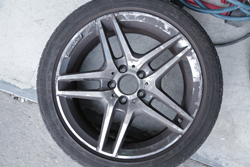 Break Dust
Break Dust
Brake Dust can affect your alloy wheels at any time and should be cleaned regularly, but your alloy wheels are particularly vulnerable in winter because break dust is corrosive and will compromise the protective liqueur layer allowing water to seep in and damage your alloys further. Brake dust can also affect the structural integrity of your rims.
Friction between the brake disks and brake pads causes brake dust to occur which produces dust that sticks to your rims. Brake dust is corrosive, unattractive and difficult to remove and so it is essential to remove it as soon as its takes hold to your alloys.
Preventing brake dust can be achieved with one of the following options; fit low dust brake pads to your car, fit dust shields to your rims or stick to a proper wheel care regime.
Alloy Wheel Cleaning Kit
To achieve the best results it is a good idea to invest in a proper car care cleaning kit and to establish a good cleaning regime. Here’s a list of what we advise to have on hand for cleaning your alloy wheels:
- Wheel and Tyre Cleaner
- Wheel and Tire Brushes
- Wheel Detailing Clay
- Buckets
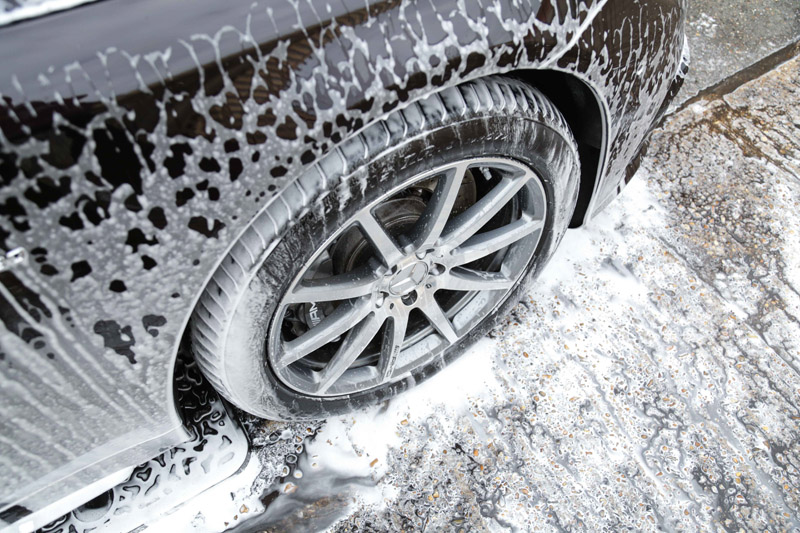 Cleaning Your Alloys
Cleaning Your Alloys
Once you have removed the brake dust and got the kit it is time to give your alloys a thoroughly good clean! Our step-by-step guide below will help you achieve sparkling results and help protect your alloys from winter damage. We do advise washing the wheels before the rest of the car to ensure you don’t have dirt and brake dust splashing over your clean bodywork!
1. Clean your tyres and wheel well using specialist tyre cleaner and brush. Your tyre brush should be stiff and should under no circumstances be used on your alloys!
2. Give your wheels a thorough rinse to remove brake dust and dirt. Ideally you want a hard stream of water from a hose
3. Apply the wheel cleaner
4. Scrub the wheel with your soft alloy brush to gently work away the grime and brake dust, without damaging the surface of your alloy. Remember to keep the alloy wet throughout the process and work all around the back and front of the wheel to ensure you scrub off all the dirt. Your clean and dirty water buckets will come in very handy here
5. Rinse everything thoroughly
6. Dry your wheels with a towel to prevent water spots appearing
Clay Detailing
Clay detailing provides a deep shine and gives you peace of mind that residual break dust and another corrosive elements have been totally removed from your alloys.
A wheel detailing clay bar feels a bit like putty when you first touch it. Pick some up from shops like Halfords along with a suitable lubricant and you’re ready to clean your alloys like the professionals.
Work in segments of the alloy and spray a small amount of lubricant on the area and then flatten the clay over your fingers and gently rub it over the wheel. Make sure you cover every area, and pay particular attention to any black spots. You’ll be amazed at how much dirt you see transferred to the clay! Fold the clay over to create a new ‘clean’ surface, but don’t do this if it falls onto the ground
Once you’ve made a couple of passes over the area with the clay, give it another spray with the lubricant or a similar detailer and you’ll be rewarded with beautifully clean alloys. All you have to do now is give them a final wax or polish, depending on what’s more suitable for your wheels, and they’ll be as good as new.

 Follow
Follow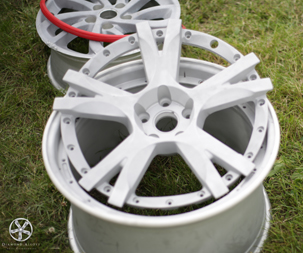 It’s a great question, and at Diamond Alloys West London we believe the simple answer is yes!
It’s a great question, and at Diamond Alloys West London we believe the simple answer is yes!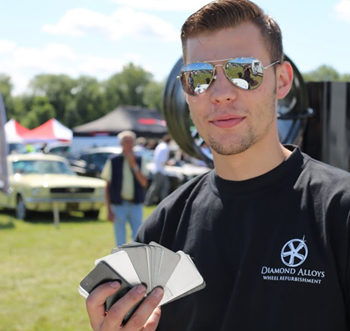 recommend adding
recommend adding 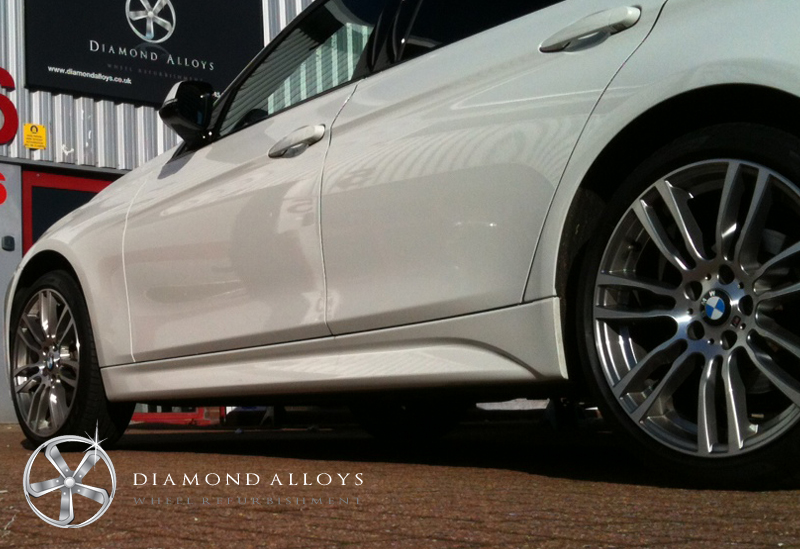 At Diamond Alloys, we believe it is important to showcase our work. Not only because we are proud of what we do but also because it shows our valued clients how much care and attention our dedicated alloy wheel repair technicians put into each and every job.
At Diamond Alloys, we believe it is important to showcase our work. Not only because we are proud of what we do but also because it shows our valued clients how much care and attention our dedicated alloy wheel repair technicians put into each and every job.



















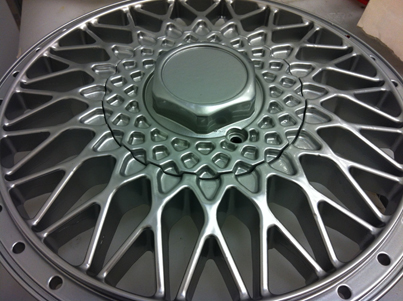
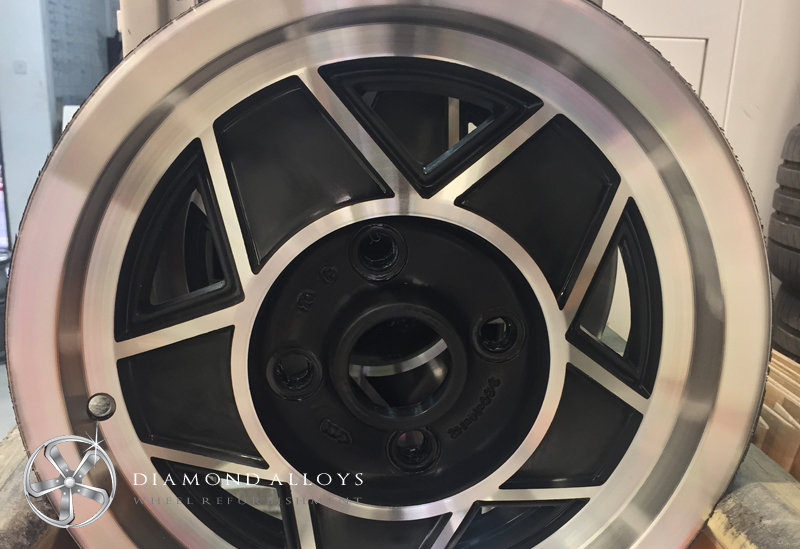

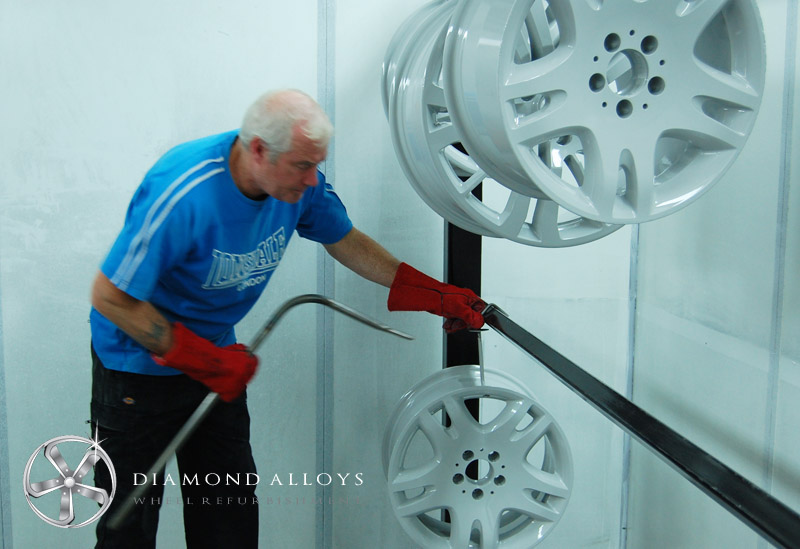
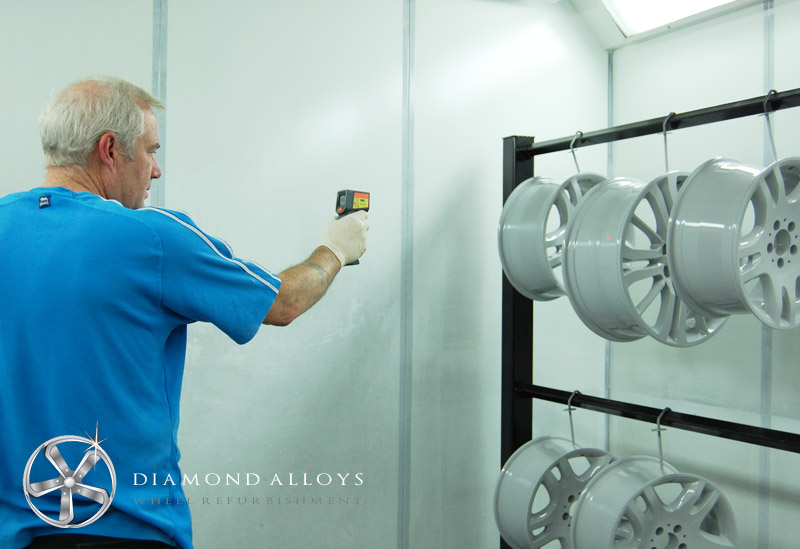
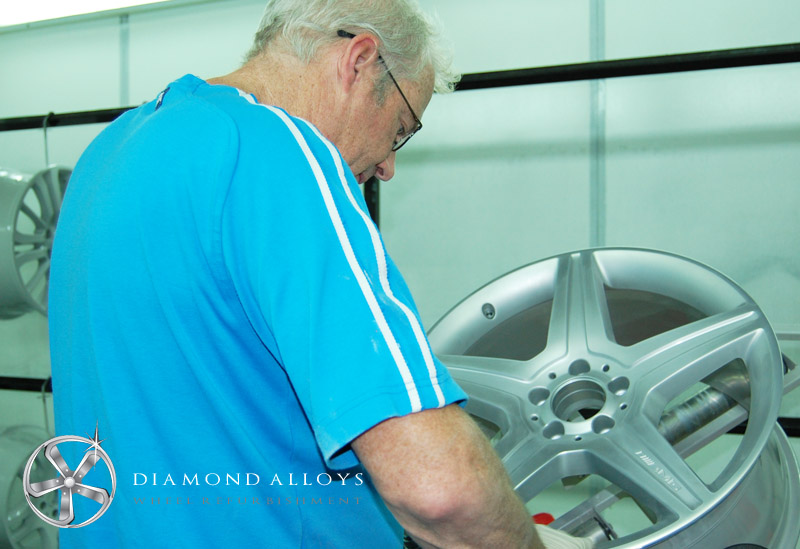
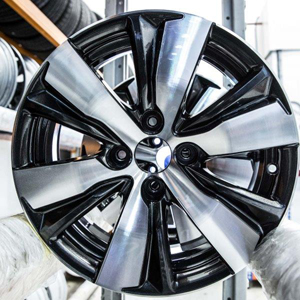 According to Oliver Rak, Project Manager at Mercedes Benz, when it comes to what is on trend for alloy wheels this year “It is a continuation of last year’s trends: large formats are still very much ‘in’, as well as are light-alloy wheels with a high-sheen finish, whose allure stems from the contrast between the seemingly bare metal surface and the painted areas.”
According to Oliver Rak, Project Manager at Mercedes Benz, when it comes to what is on trend for alloy wheels this year “It is a continuation of last year’s trends: large formats are still very much ‘in’, as well as are light-alloy wheels with a high-sheen finish, whose allure stems from the contrast between the seemingly bare metal surface and the painted areas.”




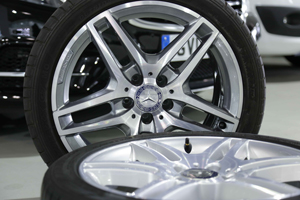 It’s a great question and Diamond Alloys is on hand to help you decide.
It’s a great question and Diamond Alloys is on hand to help you decide.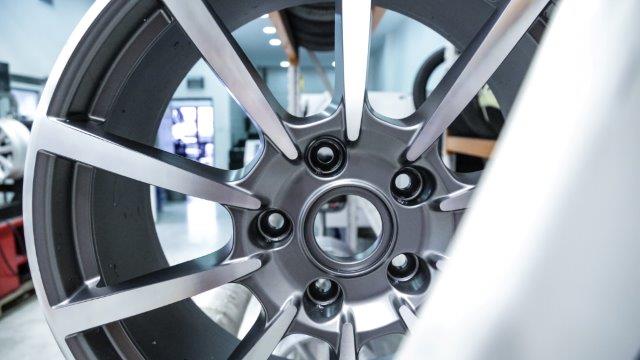 We love to shout about how good we are at repairing and refurbishing alloy wheels. We believe the proof is in the pudding and so regularly share finished wheels on our
We love to shout about how good we are at repairing and refurbishing alloy wheels. We believe the proof is in the pudding and so regularly share finished wheels on our 









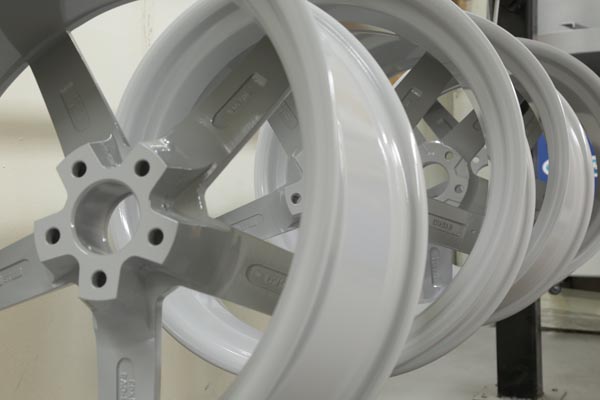 Have you ever had someone ‘pop in’ to see you unexpectedly? Did you then do what millions of us do, and spend five minutes frantically making the place look as clean and tidy as possible – perhaps by hiding all the dirty dishes in a cupboard? There’s no shame in these temporary measures, because that’s just what they are – temporary. You’re simply trying to give your guest a pleasant experience, not to mention protect your reputation as a homeowner! What you’re not doing is permanently keeping those dirty plates in the cupboard, or leaving that pile of un-ironed laundry hidden behind the sofa forever. That would be terrible, right?
Have you ever had someone ‘pop in’ to see you unexpectedly? Did you then do what millions of us do, and spend five minutes frantically making the place look as clean and tidy as possible – perhaps by hiding all the dirty dishes in a cupboard? There’s no shame in these temporary measures, because that’s just what they are – temporary. You’re simply trying to give your guest a pleasant experience, not to mention protect your reputation as a homeowner! What you’re not doing is permanently keeping those dirty plates in the cupboard, or leaving that pile of un-ironed laundry hidden behind the sofa forever. That would be terrible, right?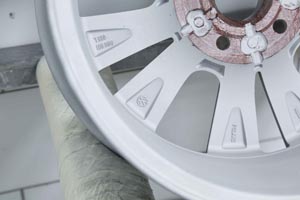 If you agree with that, then you can imagine how we feel about companies that only repair and maintain the front of the wheel. It’s the same kind of thing – they’re only treating the areas that people can see and letting the hidden areas, in this case the back of the alloy, become filthy and unloved. The worst thing is that it often isn’t made clear that this is what the company has done, mean that customers think that their wheels are more protected than they are in reality.
If you agree with that, then you can imagine how we feel about companies that only repair and maintain the front of the wheel. It’s the same kind of thing – they’re only treating the areas that people can see and letting the hidden areas, in this case the back of the alloy, become filthy and unloved. The worst thing is that it often isn’t made clear that this is what the company has done, mean that customers think that their wheels are more protected than they are in reality.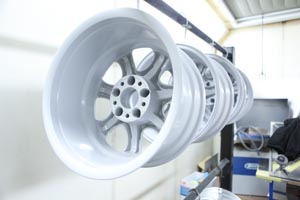 Here at Diamond Alloys we powder coat and paint the entire alloy, not just the front. This is because we are committed to providing the highest quality service possible, and because we believe that all parts of an alloy should be cared for equally, regardless of whether or not they are visible.
Here at Diamond Alloys we powder coat and paint the entire alloy, not just the front. This is because we are committed to providing the highest quality service possible, and because we believe that all parts of an alloy should be cared for equally, regardless of whether or not they are visible.